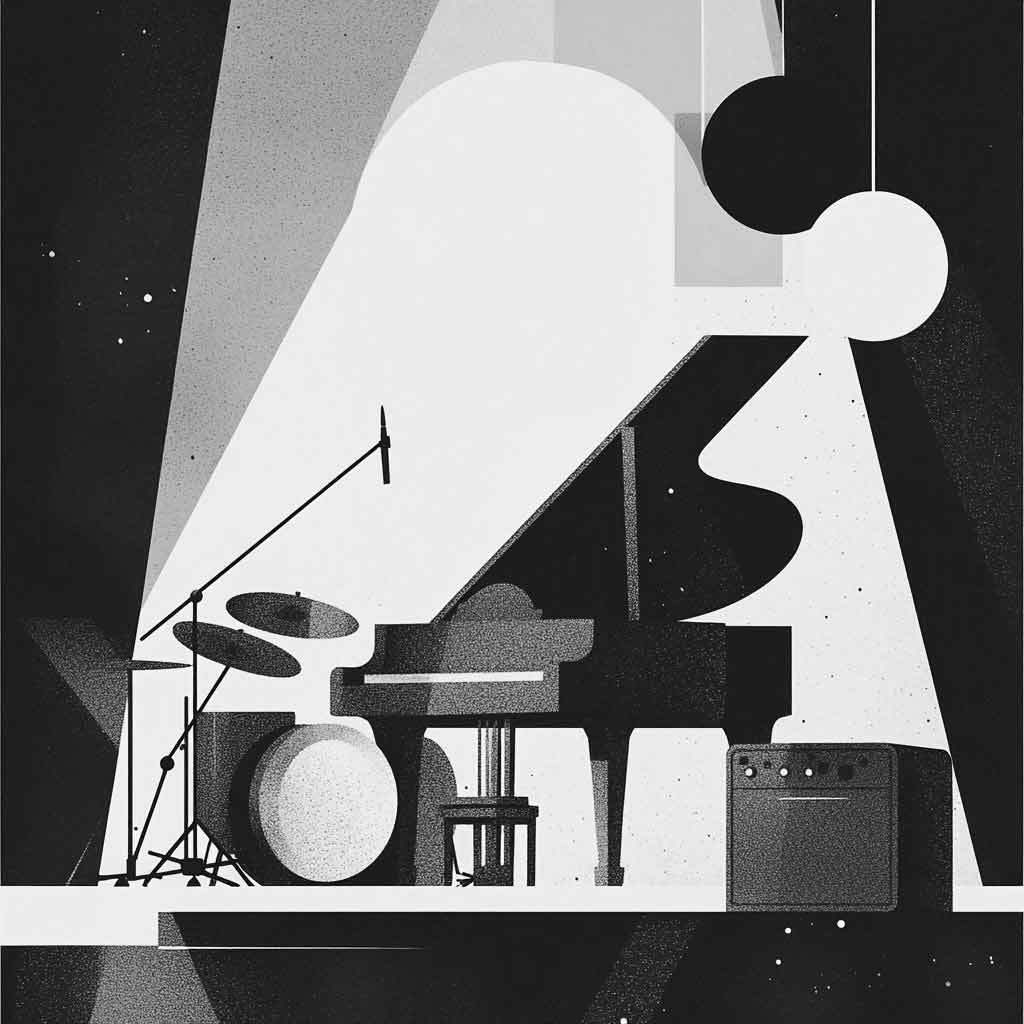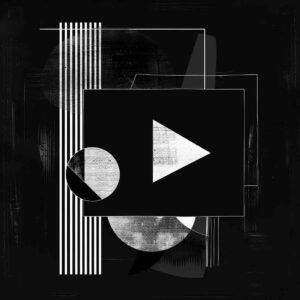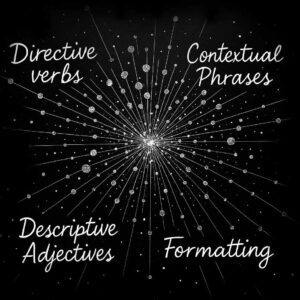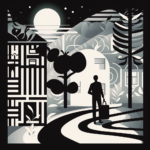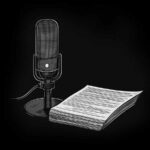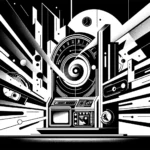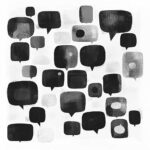AI music generators like Suno and Udio are improving at an incredible pace. With just a few well-chosen words, you can prompt a new song into existence that matches the sound you are looking for. This opens up new possibilities for music creation, but it also requires a specific skill: the ability to describe music like a pro.
Like art generators, terms of service for these music generators prevent users from simply dropping the name of an artist or an existing song into a prompt. This is understandable and ensures creativity remains within legal boundaries. However, it also means users must rely on their descriptive abilities to achieve the desired musical output. Music critics and review writers for publications like Rolling Stone or Pitchfork have been perfecting this art for years. Their skill in using words to describe music can now serve as a model for those using AI to generate music.
When you ask a casual music fan what kind of music they like, they will probably start by naming broad genres like country, jazz, or classic rock. They might even mention a specific artist like Pink Floyd or Johnny Cash. A more enthusiastic music lover, however, can go deeper, naming subgenres like progressive rock or outlaw country. They might even reference niche genres such as chiptune or shoegaze. This specificity is crucial when generating music with AI.
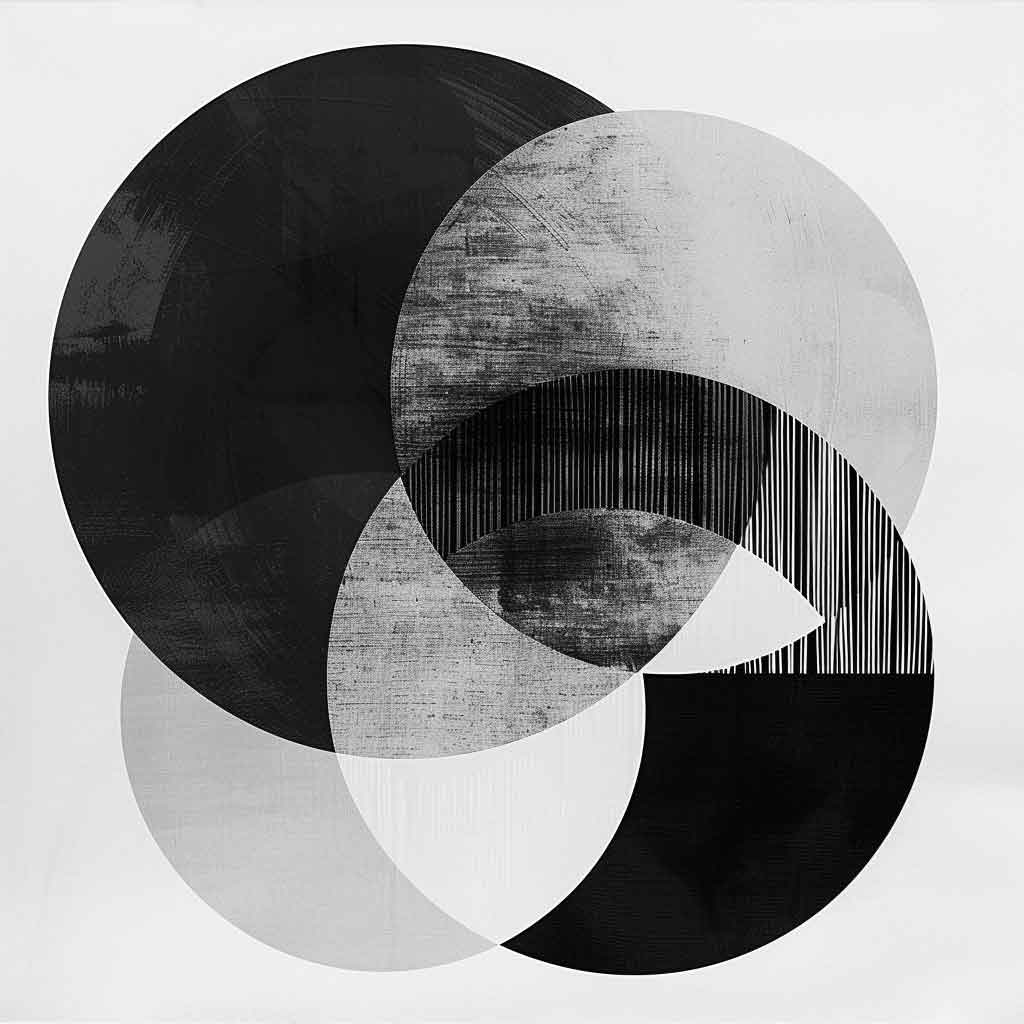
Generate accurate style descriptions for better prompts
Need to find the words to describe a peice of music, a style of cinematography, or a tone of voice? The Word.Studio Style Articulator can help you generate detailed description quickly.
To create a precise music prompt, it helps to not only know the subgenre but also the specific words that describe it. For example, instead of just saying you want a rock song, you might specify “gritty, blues-infused rock with deep, brooding guitar riffs and boisterous drums.” This level of detail can significantly impact the AI’s ability to generate the music you envision.
Broad Genres and Their Characteristics
Understanding the elements of broad genres like Country, Jazz, Classical, and Rock is foundational for mastering the art of describing specific music styles in your prompts. Each of these overarching genres has distinct characteristics that form the basis for numerous subgenres. Country music typically features acoustic instruments and storytelling lyrics, while Jazz is known for its improvisation, complex chords, and swing rhythms. Classical music encompasses structured compositions and orchestral arrangements, emphasizing harmony and form. Rock is characterized by electric guitars, strong backbeats, and memorable riffs. By grasping these core elements, you can accurately identify and describe the nuances within subgenres, enabling you to craft precise and evocative prompts that guide artists, musicians, or AI in creating the desired sound and style.
Country: Acoustic instruments like guitars, fiddles, and banjos. Lyrics narrate stories of life, love, and hardship. Often features a twangy vocal style and simple, relatable melodies.
Jazz: Improvisation, complex chords, swing rhythms. Instruments include saxophones, trumpets, pianos, and double bass. Rich in syncopation and blue notes, creating a lively, unpredictable soundscape.
Classic Rock: Electric guitars, strong backbeats, memorable riffs. Rooted in blues and rock and roll. Anthemic choruses, powerful vocals, and high-energy performances. Iconic bands define the era with groundbreaking albums.
Hip Hop: Rhythmic speech (rapping), DJing, sampling. Strong beats, often electronic, with bass-heavy grooves. Lyrics reflect urban life, social issues, personal experiences. Emphasizes rhythm, poetry, and street vernacular.
Pop: Catchy melodies, repetitive choruses. Polished production, often electronic. Lyrics focus on love, relationships, and fun. Accessible and radio-friendly, aiming for mass appeal and commercial success.
Classical: Orchestral arrangements, structured compositions. Utilizes strings, woodwinds, brass, and percussion. Emphasis on harmony, melody, and form. Spans from baroque to romantic eras, often complex and dynamic.
Reggae: Offbeat rhythms, laid-back grooves. Prominent basslines, guitar skanks. Lyrics often address social and political themes, Rastafarianism. Originated in Jamaica, creating a distinct, relaxed vibe.
Blues: Expressive melodies, twelve-bar structure. Use of blue notes, call-and-response patterns. Guitars, harmonicas, pianos dominate. Lyrics typically reflect sorrow, hardship, and emotional depth.
Electronic Dance Music (EDM): Synthesized sounds, strong beats. Designed for dancing, often featuring drops, build-ups. Wide range of subgenres, including house, techno, trance. Energetic, repetitive, and rhythmically driven.
R&B (Rhythm and Blues): Smooth vocals, groovy basslines. Blend of soul, funk, and pop elements. Focus on love, relationships, and emotional expression. Rich harmonies, often featuring backing vocals.
Specific Subgenres and Descriptive Terms
Knowing the elements of these subgenres and studying their detailed descriptions can significantly enhance your ability to create precise and evocative descriptive recipes. By understanding the distinctive characteristics—such as the extended compositions and complex time signatures in progressive rock or the nostalgic 8-bit sound of chiptune—you can accurately communicate the desired musical or artistic direction. This knowledge allows you to craft better prompts for artists, musicians, or AI, ensuring they capture the intended mood, style, and thematic elements. For instance, requesting “ethereal, reverb-laden soundscapes with layered guitar textures” for a shoegaze-inspired piece provides clear, actionable guidance, leading to more authentic and effective creative outcomes. Here is a non-exhaustive list of examples.
Progressive Rock: Extended compositions, complex time signatures, and a fusion of rock with classical, jazz, and experimental elements. Intricate instrumental passages, often with elaborate solos. Themes often include science fiction, fantasy, and abstract concepts. Notable bands: Yes, King Crimson, Genesis, Pink Floyd.
Outlaw Country: Rebellious edge with gritty, raw lyrics. A reaction against the polished Nashville sound. Themes of independence, anti-authoritarianism, and rugged individualism. Often features traditional country instrumentation but with a rougher, more honest sound. Key artists: Willie Nelson, Waylon Jennings, Merle Haggard, Johnny Cash.
Chiptune: Created using the sound chips of vintage computers and video game consoles, producing a nostalgic, 8-bit sound. Simple yet catchy melodies, often looped and layered. Embraces the limitations of early digital sound technology to create complex compositions. Prominent artists: Anamanaguchi, Chipzel, Disasterpeace.
Shoegaze: Ethereal soundscapes with heavy use of reverb, delay, and distortion. Obscured, often indecipherable vocals that blend into the mix. Layered guitar textures creating a wall of sound. Dreamy, introspective, and often melancholic atmospheres. Influential bands: My Bloody Valentine, Slowdive, Ride, Lush.
Dream Pop: Ethereal soundscapes, lush reverb-drenched guitars, and hazy, understated vocals. Ambient, otherworldly atmospheres with soft, dreamy melodies drifting through layers of echo. Sonic textures that evoke a sense of floating, creating an immersive, tranquil listening experience. Key artists: Cocteau Twins, Beach House, Mazzy Star.
Punk Rock: Fast tempos, short songs, and a raw, stripped-down sound. Often political or anti-establishment lyrics, emphasizing rebellion and DIY ethics. Simple, aggressive guitar riffs, and straightforward drumming. Pioneering bands: The Ramones, The Sex Pistols, The Clash, Dead Kennedys.
Grunge: Heavy guitar distortion, angst-filled lyrics, and a fusion of punk and metal influences. Dark, introspective themes often reflecting disillusionment and social alienation. Raw, unpolished sound with dynamic shifts from soft to loud. Key bands: Nirvana, Pearl Jam, Soundgarden, Alice in Chains.
Synthwave: Retro-futuristic sound drawing inspiration from 1980s electronic music and film soundtracks. Characterized by lush synthesizers, pulsing basslines, and neon-soaked atmospheres. Nostalgic yet modern, often with cinematic qualities. Notable artists: Kavinsky, Perturbator, Carpenter Brut, Gunship.
Bluegrass: Fast tempos, virtuosic instrumental playing, and tight vocal harmonies. Acoustic string instruments like banjo, fiddle, mandolin, guitar, and upright bass. Roots in Appalachian folk music, often featuring themes of rural life and hardship. Prominent acts: Bill Monroe, Flatt & Scruggs, The Stanley Brothers, Alison Krauss & Union Station.
Trip-Hop: A fusion of hip-hop beats, downtempo rhythms, and atmospheric soundscapes. Moody, introspective vibes with elements of jazz, dub, and soul. Often features haunting vocals and sampling. Key artists: Massive Attack, Portishead, Tricky, Morcheeba.
New Wave: A blend of punk rock’s energy with pop sensibilities and electronic elements. Catchy melodies, synthesizers, and quirky, often ironic lyrics. Fashion-conscious and visually distinctive. Key acts: Talking Heads, Blondie, Duran Duran, Depeche Mode.
Emo: Emotionally charged lyrics, often exploring themes of heartbreak, despair, and introspection. A mix of punk rock energy and melodic, introspective passages. Clean and screamed vocals, dynamic shifts in intensity. Influential bands: My Chemical Romance, Dashboard Confessional, Sunny Day Real Estate, Taking Back Sunday.
Folk Rock: Combines elements of folk music and rock, featuring acoustic instruments and rock rhythms. Lyrics often focus on social and political issues, storytelling, and personal reflection. Harmonious vocals and melodic guitar work. Prominent artists: Bob Dylan, The Byrds, Simon & Garfunkel, Fleet Foxes.
Baroque: Ornate, elaborate compositions with complex counterpoint and harmonies. Emphasis on contrast and grandeur, often featuring harpsichord, strings, and brass. Structured forms like fugues and concertos. Prominent composers: Johann Sebastian Bach, George Frideric Handel, Antonio Vivaldi.
Minimalism: Repetition of simple motifs, gradual changes, and a focus on tonality. Hypnotic, meditative quality with a reduced harmonic palette. Often uses small ensembles and electronic instruments. Key composers: Steve Reich, Philip Glass, Terry Riley, John Adams.
Neoclassical: Modern reinterpretation of classical forms and styles. Balances traditional harmony and melody with contemporary techniques. Clarity, order, and emotional restraint. Notable composers: Igor Stravinsky, Sergei Prokofiev, Maurice Ravel, Paul Hindemith.
Vaporwave: Aesthetic-driven genre combining chopped and screwed samples, retro muzak, and nostalgic imagery. Slow tempos, heavy reverb, and a surreal, dreamlike quality. Often critiques consumer culture. Key artists: Macintosh Plus, Saint Pepsi, 2814, Blank Banshee.
Post-Rock: Expansive, cinematic soundscapes with rock instrumentation. Emphasis on atmosphere, texture, and dynamics rather than traditional song structures. Often instrumental, featuring crescendos and intricate arrangements. Influential bands: Explosions in the Sky, Godspeed You! Black Emperor, Mogwai, Sigur Rós.
Gamelan: Traditional Indonesian ensemble music featuring percussive instruments like metallophones, xylophones, drums, and gongs. Rich, layered textures and complex interlocking rhythms. Often accompanies dance and theatrical performances. Prominent groups: Gamelan Sekar Jaya, Gamelan Pacifica, Ensemble Kembang Kirang.
Zydeco: Lively dance music from Louisiana’s Creole culture. Combines elements of blues, R&B, and Cajun music. Features accordion, washboard, and upbeat rhythms. Celebratory, energetic style often associated with social gatherings. Key artists: Clifton Chenier, Buckwheat Zydeco, BeauSoleil, Rockin’ Dopsie.
Math Rock: Complex, atypical time signatures and intricate, angular guitar riffs. Influenced by progressive rock and post-hardcore. Emphasis on technical proficiency and rhythmic experimentation. Notable bands: Don Caballero, Battles, American Football, Hella.
Klezmer: Traditional Jewish music from Eastern Europe. Clarinet, violin, accordion, and cymbalom. Lively, celebratory tunes alongside soulful, mournful melodies. Often accompanies dances and ceremonies. Prominent artists: The Klezmatics, Giora Feidman, David Krakauer, Itzhak Perlman.
Glitch: Experimental electronic music featuring digital distortion, glitches, and fragmented sounds. Emphasis on texture, rhythm, and sonic exploration. Uses malfunctioning audio technology and software manipulation. Key artists: Autechre, Oval, Aphex Twin, Alva Noto.
Elements of Music Description
Describing a specific musician, band, or song can be even more challenging. It helps to break down the elements of a music description into distinct categories. Here’s how you can do it:
Instruments and Sound
Think about the type of instruments used and how they contribute to the overall sound. For instance, are the guitars distorted or clean? Describing the instruments and the style of playing them provides musicians and composers with precise guidance on how to achieve the desired sound and emotional impact of a piece. For example, “sparkling arpeggios” suggests rapid, shimmering notes that create brightness and movement, ideal for classical and electronic music. “Dark, menacing synths” indicate deep, ominous tones for creating tension in industrial or horror soundtracks. “Breathy flute melodies” call for soft, airy lines that add a whimsical, ethereal quality, suitable for folk and new age genres. “Raw, acoustic percussion” points to natural, unprocessed drum sounds, creating an earthy feel for world and acoustic music. “Soaring string sections” involve high, sweeping lines that add dramatic intensity, fitting for orchestral and film scores. “Punchy brass hits” refer to short, sharp blasts, adding bold energy to jazz and funk. These descriptors help musicians and composers align their playing style and instrumentation with the intended artistic vision, ensuring the music resonates with the desired mood and style.
Whispered Vocals: Soft, intimate singing that feels like a personal secret. Creates a sense of vulnerability and closeness, often used in indie and ambient music.
Thunderous Drums: Powerful, resonant drumming with booming bass and crisp snare hits. Adds a dramatic, intense energy, often used in rock and metal.
Lush Synth Pads: Smooth, flowing synth sounds that fill the background with rich, warm tones. Creates a dreamy, atmospheric quality, often used in electronic and chillwave music.
Hypnotic Bass Grooves: Repetitive, entrancing bass lines that draw the listener into a rhythmic trance. Provides a deep, steady pulse, often used in funk and house music.
Gritty Vocal Delivery: Raw, raspy singing that conveys emotion and authenticity. Adds a rough, edgy feel, often used in blues, rock, and punk.
Sparkling Arpeggios: Rapid, shimmering notes played in succession, creating a cascading effect. Adds brightness and movement, often used in classical and electronic music.
Dark, Menacing Synths: Deep, ominous electronic sounds that create a sense of tension and unease. Often used in industrial, darkwave, and horror soundtracks.
Breathy Flute Melodies: Soft, airy flute lines that float gently over the music. Adds a whimsical, ethereal quality, often used in folk and new age music.
Raw, Acoustic Percussion: Natural, unprocessed drum sounds like handclaps, bongos, and cajóns. Creates an organic, earthy feel, often used in world and acoustic music.
Soaring String Sections: High, sweeping violin and cello lines that lift the music to dramatic heights. Adds emotional intensity and grandeur, often used in orchestral and film music.
Punchy Brass Hits: Short, sharp trumpet and trombone blasts that punctuate the music. Adds a bold, assertive energy, often used in jazz and funk.
Eerie, Dissonant Chords: Unsettling combinations of notes that create a sense of discomfort and suspense. Adds a mysterious, haunting atmosphere, often used in horror and experimental music.
Warm, Resonant Harp: Gentle, plucked strings that produce a soft, enveloping sound. Adds a delicate, angelic quality, often used in classical and new age music.
Energetic, Rhythmic Clapping: Handclaps that drive the beat with lively, infectious energy. Creates a participatory, communal feel, often used in folk and gospel music.
Velvety Saxophone Lines: Smooth, rich saxophone melodies that add warmth and sensuality. Often used in jazz, soul, and R&B.
Jangly Guitar Chords: Bright, chiming guitar sounds with a slightly metallic edge. Creates an upbeat, lively feel, often used in indie rock and jangle pop.
Subtle, Background Harmonies: Soft, understated vocal harmonies that enrich the texture without overpowering the lead melody. Adds depth and complexity, often used in pop and folk music.
Buzzy Analog Synths: Old-school electronic sounds with a warm, slightly distorted edge. Creates a retro, nostalgic vibe, often used in synthwave and electronic music.
Heavy, Syncopated Beats: Strong, offbeat rhythms that create a sense of unpredictability and excitement. Adds a driving, dynamic feel, often used in hip-hop and dance music.
Effects and Playing Techniques
Describing the effects used on instruments and the techniques employed by musicians provides crucial guidance for achieving a specific sound and mood in a composition. For instance, specifying the use of “reverb” can help create an expansive, atmospheric quality, while “distortion” indicates a need for a gritty, aggressive tone. Techniques like “fingerpicking” or “slap bass” inform the musician about the desired articulation and texture, shaping the piece’s character and emotional impact. These detailed descriptions enable musicians and composers to align their playing style and technical approach with the intended artistic vision, ensuring consistency and coherence in the musical output.
Reverb: Adds space and depth to the sound, making it feel more expansive. Creates an illusion of environment, from a small room to a vast hall, enveloping the music in ambient echoes. Often used in genres like ambient, post-rock, and dream pop.
Distortion: Creates a gritty, aggressive tone by clipping the audio signal, adding harmonic and inharmonic overtones. Essential in rock, metal, and punk for its raw, powerful sound, providing sustain and intensity to guitar riffs and solos.
Fingerpicking: A technique where guitar strings are plucked with fingers rather than a pick. Produces a delicate, intricate sound with independent bass and melody lines, allowing for greater expression and nuance. Common in folk, classical, and acoustic music.
Delay: Echo effect that repeats the sound at intervals, creating layers of sound. Can vary from subtle doubling to complex rhythmic patterns. Adds depth and texture, often used in rock, dub, and electronic music.
Slap Bass: Technique involving striking the strings with the thumb and popping them with the fingers. Produces a percussive, punchy sound with a sharp attack. Key in funk and slap-heavy rock, driving the rhythm and adding groove.
Tremolo Picking: Rapidly alternating picking of a single note or chord. Creates a shimmering, vibrating effect, adding tension and energy. Widely used in surf rock, metal, and classical guitar.
Palm Muting: Lightly resting the picking hand on the strings near the bridge. Mutes the strings slightly, creating a muted, percussive sound. Adds rhythm and control, common in rock, punk, and metal.
Hammer-ons and Pull-offs: Techniques where a finger is hammered onto or pulled off the fretboard. Produces smooth, legato transitions between notes, enabling fast, fluid playing. Essential in guitar solos across rock, metal, and blues.
Bending: Pushing or pulling a string to change its pitch. Creates expressive, vocal-like effects with varying degrees of tension and release. Fundamental in blues, rock, and country guitar playing.
Slide Guitar: Using a slide (metal, glass, or ceramic) along the strings. Produces smooth, continuous pitch changes and a distinctive, wailing sound. Integral to blues, country, and rock styles.
Wah-Wah: A pedal effect that alters the tone and frequencies of the signal to mimic a human voice saying “wah.” Creates dynamic, expressive sounds, often used in funk, rock, and psychedelic music.
Harmonics: Lightly touching the string at specific points to produce high-pitched, bell-like tones. Adds ethereal, chiming sounds to the music. Used in various genres, from classical to metal.
Sweep Picking: A technique where a pick is swept across multiple strings in a single, fluid motion. Allows for rapid, arpeggiated runs and complex patterns. Favored in shred guitar and progressive metal.
Double-Stop: Playing two notes simultaneously. Adds harmony and thickness to the melody, enhancing the richness of the sound. Common in blues, rock, and country.
Arpeggios: Playing the notes of a chord in sequence rather than simultaneously. Creates flowing, melodic lines that outline the harmony. Widely used in classical, jazz, and metal guitar.
Phaser: An effect that splits the audio signal into multiple paths, creating phase shifts. Produces a swirling, sweeping sound, adding movement and texture. Popular in psychedelic rock and funk.
Tapping: A technique where both hands tap the fretboard to produce notes. Enables fast, complex passages with fluidity and precision. A hallmark of virtuoso rock and metal guitarists.
Flanger: An effect that mixes two identical signals with one slightly delayed. Creates a sweeping, jet-plane-like sound, adding depth and motion. Used in rock, pop, and electronic music.
Artificial Harmonics: Producing harmonics by lightly touching the string with a finger while plucking. Generates high-pitched, squeaky tones that add flair and color. Used in rock, metal, and jazz fusion.
Ghost Notes: Notes played softly, with a muted attack. Adds subtle rhythm and texture without being prominent. Common in funk, jazz, and groove-oriented styles.
Tempo and Composition
Describing composition, tempo, and structure with specific, detailed terms like “epic and expansive” or “minimalist and repetitive” provides clear and vivid direction to musicians and composers. It helps them understand the intended atmosphere, emotional impact, and musical complexity desired for a piece. For instance, describing a composition as “fast-paced and frenetic” signals the need for rapid tempos and high-energy passages, while “slow and languid” suggests a relaxed pacing with drawn-out notes. These descriptive words guide the creative process, ensuring that the final piece aligns with the envisioned style and mood, and aids in communicating artistic intentions effectively within a collaborative environment. Here are some phrases you can use.
Epic and Expansive: Long, multifaceted compositions with multiple sections and dynamic shifts. Often tells a story or explores complex themes. Used in progressive rock, symphonic metal, and classical music, creating a journey-like experience.
Minimalist and Repetitive: Simple, repetitive motifs with gradual changes over time. Creates a hypnotic, meditative effect. Common in minimalism, ambient, and electronic music, focusing on subtle variations.
Fast-Paced and Frenetic: Rapid tempos with high-energy, relentless drive. Often features quick, intricate passages and a sense of urgency. Used in punk, speed metal, and techno, creating an adrenaline-fueled atmosphere.
Slow and Languid: Leisurely tempos with drawn-out notes and relaxed pacing. Evokes a sense of calm and contemplation. Common in ballads, blues, and ambient music, allowing for emotional depth and reflection.
Complex and Layered: Multiple instruments and vocal lines interweaving to create rich, textured soundscapes. Often involves intricate arrangements and harmonies. Used in classical, jazz, and progressive rock, showcasing musical sophistication.
Simple and Direct: Straightforward structures with clear, memorable melodies. Focuses on accessibility and emotional impact. Common in pop, folk, and singer-songwriter genres, emphasizing clarity and relatability.
Syncopated and Rhythmic: Offbeat accents and irregular rhythms that create a sense of groove and movement. Adds complexity and interest to the music. Found in jazz, funk, and Latin music, enhancing danceability.
Dynamic and Varied: Frequent changes in tempo, volume, and intensity. Keeps the listener engaged with contrasts and surprises. Used in classical, progressive rock, and post-rock, offering a dramatic listening experience.
Steady and Driving: Consistent tempo and rhythm that propel the music forward. Creates a sense of momentum and urgency. Common in rock, dance, and electronic music, encouraging movement and engagement.
Circular and Cyclical: Repeating motifs and structures that loop back on themselves. Creates a sense of continuity and flow. Found in minimalism, trance, and certain folk traditions, offering a meditative quality.
Fragmented and Disjointed: Abrupt changes and irregular structures that defy conventional forms. Creates a sense of unpredictability and tension. Used in avant-garde, experimental, and some forms of metal, challenging the listener’s expectations.
Smooth and Flowing: Seamless transitions and cohesive structures that move effortlessly from one section to the next. Creates a sense of unity and coherence. Common in classical, jazz, and ambient music, providing a soothing listening experience.
Epic and Grandiose: Sweeping, large-scale compositions with dramatic climaxes and expansive arrangements. Conveys grandeur and majesty. Used in symphonic metal, film scores, and classical music, aiming to awe and inspire.
Sparse and Intimate: Minimal instrumentation and quiet dynamics that create a sense of closeness and vulnerability. Highlights the emotional content of the song. Common in acoustic, folk, and lo-fi music, emphasizing personal expression.
Polyrhythmic and Complex: Multiple, overlapping rhythms that create intricate, layered textures. Adds depth and sophistication to the music. Found in jazz, African music, and progressive rock, showcasing rhythmic innovation.
Catchy and Hook-Driven: Memorable motifs and refrains designed to stick in the listener’s mind. Focuses on immediate appeal and repetition. Common in pop, rock, and commercial music, aiming for widespread resonance.
Experimental and Unconventional: Innovative structures and approaches that break traditional norms. Emphasizes creativity and exploration. Used in avant-garde, experimental, and some electronic music, pushing the boundaries of composition.
Groovy and Danceable: Rhythms and tempos that encourage movement and dance. Often features syncopation and strong, repetitive beats. Common in funk, disco, and dance music, aiming to get the listener moving.
Narrative and Storytelling: Structures that follow a storyline or thematic progression. Enhances the emotional and dramatic impact of the song. Found in folk, country, and musical theater, focusing on lyrical content and narrative arc.
Vocal Style
The singer’s voice can greatly influence the music’s character:
Raspy and Raw: Conveying a sense of authenticity and emotion. Gritty, textured vocals that exude passion and vulnerability. Often found in blues, rock, and punk, adding a raw, unpolished edge to the music.
Smooth and Silky: Providing a relaxed and polished feel. Velvety, fluid tones that glide effortlessly through melodies. Ideal for jazz, R&B, and soul, creating a soothing and sophisticated atmosphere.
Powerful and Commanding: Delivering strong and impactful performances. Robust, dynamic vocals that project confidence and authority. Common in rock, opera, and gospel, driving the music with intense energy and presence.
Breathy and Intimate: Soft, airy vocals that create a sense of closeness and tenderness. Often used in indie, folk, and ambient music to evoke intimacy and vulnerability.
Operatic and Dramatic: Highly trained, full-bodied vocals with precise control and wide range. Adds grandeur and emotional depth, often used in classical and musical theater to convey complex narratives.
Soulful and Expressive: Rich, emotive singing that captures deep feeling and nuance. Found in soul, blues, and gospel, conveying a profound sense of longing, joy, or sorrow.
Nasal and Twangy: Distinctive, resonant tones produced by emphasizing nasal passages. Common in country and folk music, adding a unique, regional character and storytelling quality.
Melancholic and Haunting: Sorrowful, ethereal vocals that linger and resonate. Used in genres like dream pop, gothic rock, and post-punk to evoke a sense of melancholy and introspection.
Gravelly and Guttural: Deep, coarse vocals that convey raw intensity and primal emotion. Often found in metal, hardcore, and blues, adding a fierce, visceral edge to the music.
Whispered and Subdued: Quiet, understated singing that creates an intimate, introspective mood. Used in ambient, minimalist, and indie genres to draw the listener into a personal, contemplative space.
Playful and Lighthearted: Bright, buoyant vocals that add a sense of fun and whimsy. Common in pop, children’s music, and novelty songs, bringing a cheerful, uplifting vibe.
Sultry and Seductive: Warm, alluring tones that exude sensuality and charm. Often found in jazz, R&B, and lounge music, creating a captivating, intimate atmosphere.
Raw and Unpolished: Unrefined, emotive singing that emphasizes authenticity over technical perfection. Common in punk, lo-fi, and folk music, adding a genuine, heartfelt quality.
Crisp and Articulate: Clear, precise enunciation that enhances lyrical delivery and storytelling. Used in musical theater, rap, and spoken word to ensure every word is understood and impactful.
Dreamy and Ethereal: Soft, floaty vocals that create a surreal, otherworldly atmosphere. Often layered with reverb and delay, used in genres like shoegaze, dream pop, and ambient music.
Putting It All Together: Crafting Your Music Prompt
When crafting a music prompt, combining these elements can help you capture the essence of the sound you’re looking for. Here are some examples:
Rock Song Prompt: “A gritty, blues-infused rock song with deep, brooding guitar riffs, booming rhythmic bass lines, and boisterous drums. The vocals should be raw and raspy, conveying intense emotion.”
Electronic Music Prompt: “An upbeat, fast-paced electronic track with catchy synth melodies, heavy use of reverb and distortion, and a driving bassline. The composition should be complex, featuring multiple layers of sound.”
Jazz Ballad Prompt: “A slow, mellow jazz ballad with smooth and silky vocals, intricate fingerpicking guitar, and a relaxed tempo. The lyrics should be poetic and metaphorical, exploring themes of love and loss.”
Classical Composition Prompt: “An expansive orchestral piece featuring soaring string sections, cinematic brass, and delicate woodwinds. The composition should include dynamic shifts, ranging from quiet, intimate passages to powerful, grandiose climaxes, evoking a sense of epic storytelling.”
Country Song Prompt: “A heartfelt country ballad with warm, acoustic melodies, twangy guitar, and soulful harmonica. The vocals should be sincere and emotive, telling a story of love, heartbreak, and resilience. The tempo should be steady, creating a reflective and nostalgic mood.”
Hip-Hop Track Prompt: “A hard-hitting hip-hop track with deep, punchy bass, crisp drum beats, and intricate, syncopated rhythms. The vocals should be powerful and commanding, delivering clever wordplay and insightful lyrics. Include subtle background harmonies and occasional DJ scratching to enhance the texture.”
Pop Song Prompt: “A catchy, radio-friendly pop song with a driving beat, sparkling synth arpeggios, and a memorable chorus. The vocals should be bright and energetic, conveying a sense of fun and excitement. The structure should be simple and direct, with a strong hook and a bridge that builds to a final, euphoric chorus.”
Blues Song Prompt: “A soulful blues track with gritty, expressive guitar solos, steady walking bass lines, and raw, emotional vocals. The lyrics should convey themes of struggle and perseverance, with a slow to medium tempo that allows for deep, heartfelt expression.”
Folk Song Prompt: “An intimate folk song with gentle acoustic fingerpicking, breathy flute melodies, and warm, resonant harmonies. The vocals should be soft and tender, telling a story rich in imagery and emotion. The overall feel should be earthy and organic, evoking a sense of connection to nature.”
Getting Specific. Describe the sound of a specific musician, band, or song.
The genre-based prompts above offer a good starting point for crafting your own music descriptions, but they can be a bit generic. What if you want to emulate a sound you have already heard before? What if you want to describe the style of a specific band or musician? You might want to find the words to emulate a specific album or song. You may even want to describe a movie score. Can you listen to a piece of music and quickly find the words to describe it? Once again, AI has an incredible ability to do this in seconds. Tools like our Style Articulator can describe a peice of music with incredible detail in seconds. Here are some examples
Pink Floyd: Atmospheric and immersive soundscapes. Extended instrumental sections. Experimental use of synthesizers and sound effects. Lyrically introspective and philosophical. Seamless transitions between tracks. Complex, multi-layered arrangements. A blend of rock, blues, and progressive influences. Dreamlike, otherworldly feel with a melancholic undertone.
Aretha Franklin: Soulful and powerful vocal delivery. Rich, emotive timbre. Effortless control and range. Gospel-inspired intensity. Dynamic phrasing with bluesy inflections. Commanding presence with heartfelt passion. Smooth transitions between registers. Classic soul arrangements with lush instrumentation.
Beastie Boys: Dynamic fusion of hip-hop, punk, and rock. Hard-hitting, funky beats with extensive sampling from diverse genres. Raw, energetic instrumentation featuring prominent basslines and sharp guitar riffs. Unconventional song structures with frequent tempo changes. Playful, irreverent lyrics delivered with a rhythmic, fast-paced vocal style. Innovative, DIY production ethos creating a gritty, rebellious sound.
Bach: Intricate and harmonically complex classical compositions. Masterful counterpoint with interwoven melodic lines. Baroque grandeur and formal structure. Rich, textured polyphony. Expressive, emotive phrasing within strict forms. Elegantly balanced, with mathematical precision. Inventive use of harmony and modulation.
Mozart: Elegant and sophisticated classical compositions. Bright, clear melodies with intricate ornamentation. Graceful, balanced phrasing. Lively, dynamic tempos with precise execution. Rich, harmonious textures blending strings, woodwinds, and brass. Playful, conversational interplay between instruments. Emotive, yet controlled expressiveness. Complex, yet accessible structures showcasing virtuosity and refinement.
Muddy Waters: Deep, soulful blues with a raw, earthy tone. Gritty vocals and emotive delivery. Prominent use of slide guitar and harmonica. Steady, driving rhythms with a strong backbeat. Expressive, call-and-response patterns. Rooted in traditional Delta blues with an electric edge. Authentic storytelling with themes of hardship and resilience.
Black Pumas: Retro-soul with a modern twist. Warm, vintage-inspired production. Smooth, emotive vocals with a gritty edge. Rich, layered instrumentation featuring prominent basslines, lush strings, and dynamic guitar riffs. Groove-driven rhythms with a laid-back feel. Blends elements of funk, R&B, and psychedelic rock. Evocative, soulful melodies with an atmospheric vibe.
David Bowie: Eclectic and innovative glam rock. Theatrical vocal delivery with a dynamic range. Bold use of synthesizers and electronic textures. Artful blend of rock, pop, and experimental sounds. Futuristic, genre-defying arrangements. Inventive production techniques. Shimmering guitars and prominent basslines. Rhythmic complexity with a mix of tempos. Engaging, atmospheric mood with a touch of surrealism.
Ella Fitzgerald: Smooth, velvety jazz vocals with impeccable diction and phrasing. Effortless, playful scat singing, full of inventive improvisation. Wide vocal range with a rich, warm timbre. Swinging rhythms and sophisticated, intricate melodies. Light, nuanced vibrato adding subtle emotional depth. Expressive delivery with a joyful, upbeat energy. Mastery of tempo and timing, creating a sense of effortless elegance and charm.
Taylor Swift: Versatile pop and country fusion. Catchy, melodic hooks with polished production. Bright, clear vocal delivery. Dynamic blend of acoustic guitars, synthesizers, and lush orchestration. Varied tempos from upbeat anthems to introspective ballads. Crisp percussion and driving basslines. Emotionally resonant and relatable mood.
Daft Punk: Futuristic electronic music with a retro flair. Heavy use of synthesizers, vocoders, and drum machines. Infectious, danceable beats with a four-on-the-floor rhythm. Smooth, robotic vocal effects. Funky basslines and shimmering melodies. Seamless blending of house, disco, and techno. Crisp, polished production. Energetic and euphoric atmosphere with a space-age feel.
Björk: Experimental and eclectic art pop. Ethereal, emotive vocal style with a wide range. Intricate, layered electronic arrangements. Unconventional song structures with shifting tempos. Organic instrumentation blended with digital effects. Atmospheric soundscapes with a touch of the avant-garde. Rich, textural production. Haunting and otherworldly mood.
Jefferson Airplane: Psychedelic rock with a rebellious edge. Powerful, soaring vocals with rich harmonies. Distorted guitar riffs and jangly rhythms. Prominent use of reverb and feedback. Energetic drumming with intricate patterns. Trippy, experimental soundscapes. Bold, improvisational solos. Electric basslines driving the groove. Captivating and surreal atmosphere.
Patsy Cline: Lush orchestration with classic Nashville sound. Steel guitar, gentle piano, and subtle string arrangements. Nostalgic, intimate storytelling. Warm, resonant tones. Timeless elegance, blending honky-tonk and sophisticated balladry. Evocative of heartache and longing. Expressive phrasing, effortlessly capturing raw emotions. Quintessentially American, deeply soulful, and universally relatable.
John Williams Jurassic Park Score: Majestic and sweeping orchestral compositions. Rich, full-bodied strings with soaring melodies. Powerful brass sections and dynamic percussion. Lush, expansive soundscapes. Varied tempos from dramatic crescendos to serene, reflective passages. Evocative, adventurous mood with a sense of wonder and grandeur. Intricate use of leitmotifs and thematic development.
Hans Zimmer’s Interstellar Score: Expansive and atmospheric compositions. Emotive, minimalist piano melodies with subtle, repeating motifs. Lush, evolving string arrangements creating a sense of movement. Powerful, resonant organ tones adding a celestial quality. Dynamic crescendos featuring intense brass and rhythmic percussion. Haunting, ethereal synthesizers providing a futuristic edge. Slow-building tempos creating tension and dramatic release. Immersive, layered soundscapes evoking awe, wonder, and deep introspection.
Johnny Greenwood’s There Will Be Blood Score: Dark and haunting orchestral compositions. Dissonant string arrangements creating tension and unease. Minimalist piano motifs with a foreboding tone. Sparse, eerie percussion enhancing the mood. Layered, textural soundscapes with an avant-garde edge. Slow-building crescendos leading to intense climaxes. Brooding, atmospheric quality evoking a sense of impending doom.
Conclusion: The Power of Words in Music Creation
Describing music accurately is an essential skill for anyone using AI music generators like Suno and Udio. By understanding the elements of music and how to articulate them, you can craft precise prompts that lead to the creation of songs that match your vision. Whether you’re a casual listener or a dedicated music enthusiast, honing your ability to describe music can enhance your appreciation of the art form and open up new creative possibilities. So next time you want to generate a new track, remember: the right words can make all the difference.

